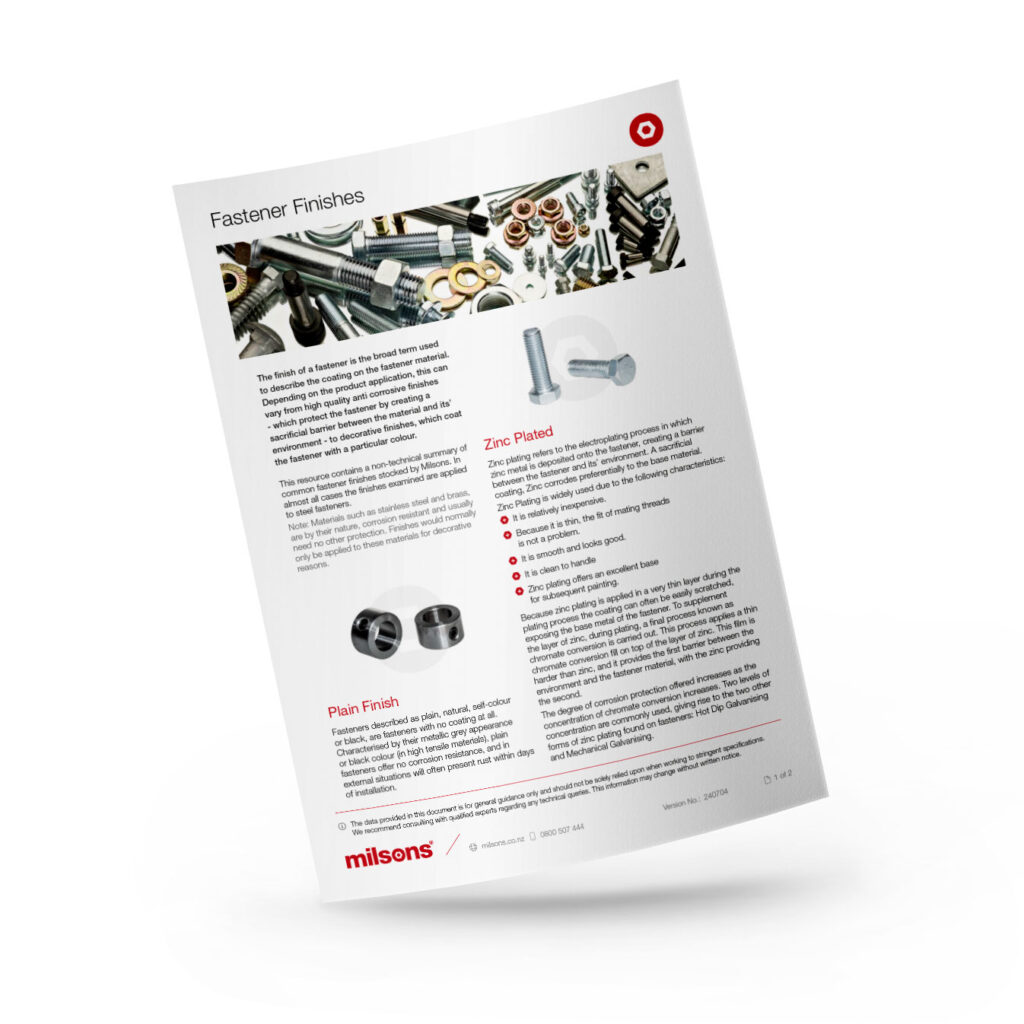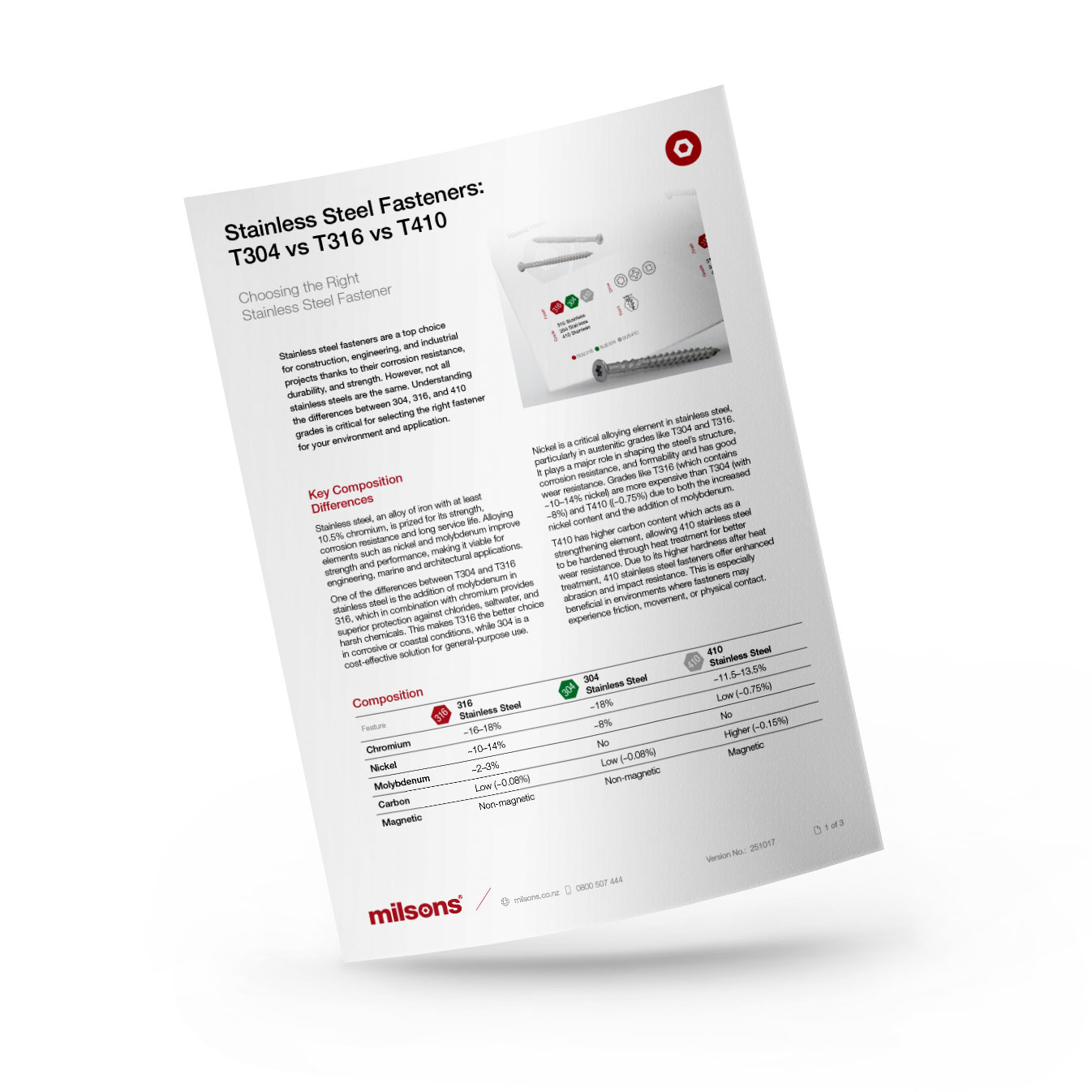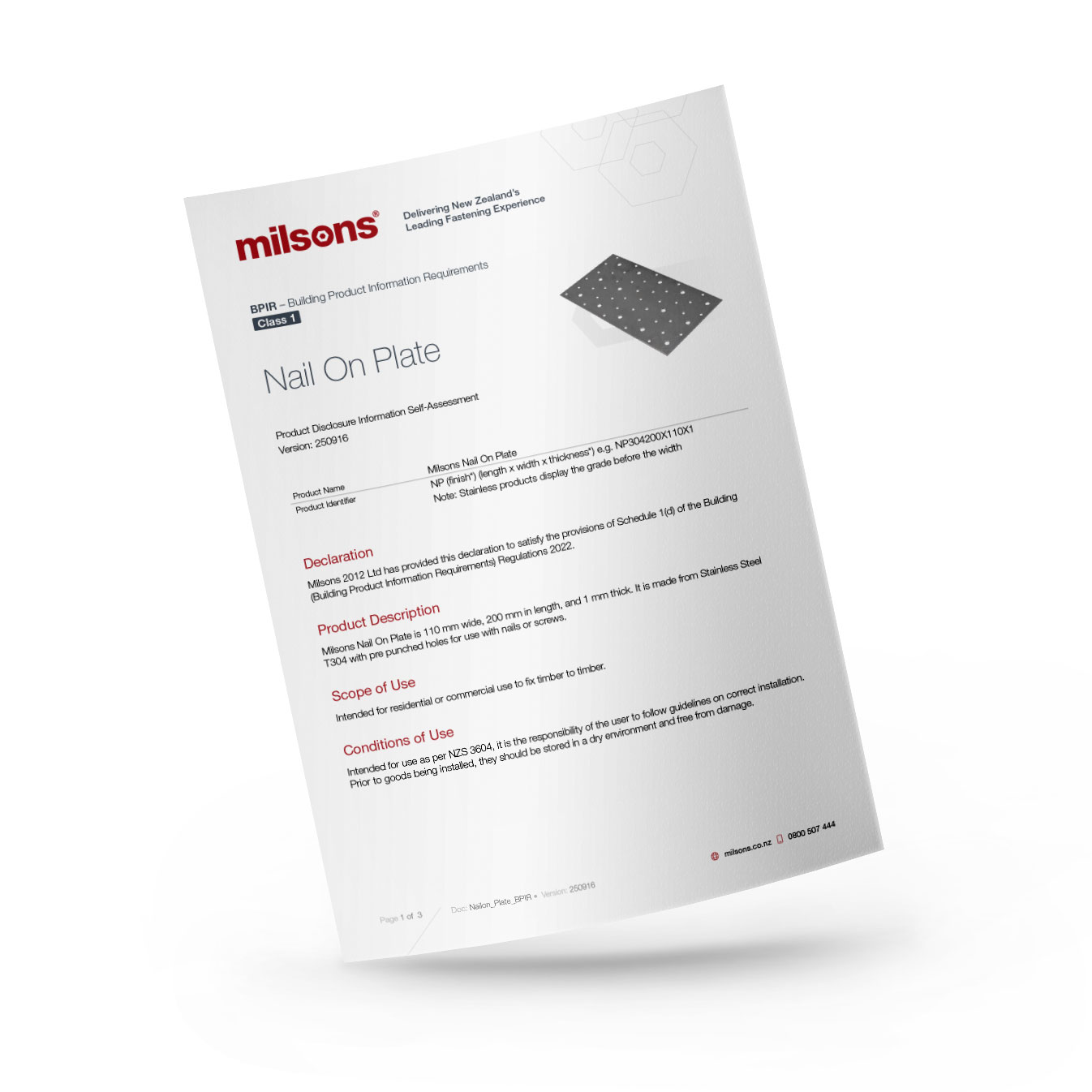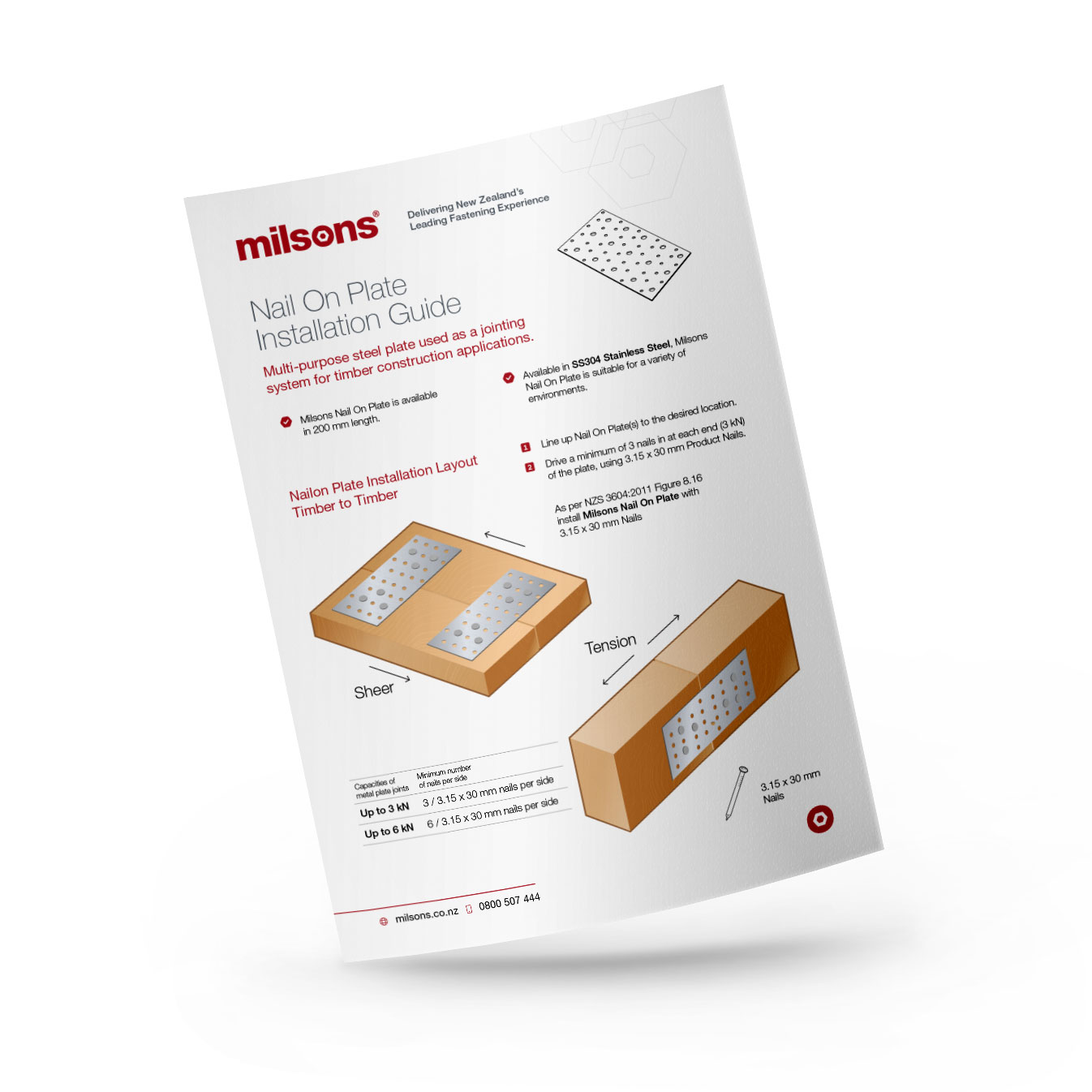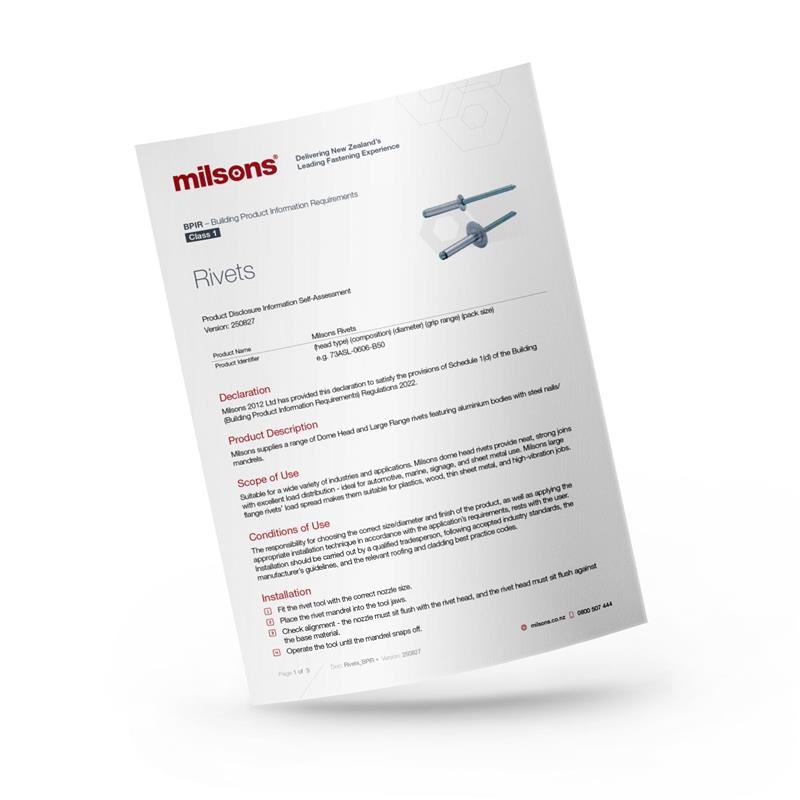
This resource contains a non-technical summary of common fastener finishes stocked by Milsons. In
almost all cases the finishes examined are applied to steel fasteners. Note: Materials such as stainless steel and brass, are by their nature, corrosion resistant and usually need no other protection. Finishes would normally
only be applied to these materials for decorative reasons.

Plain Finish
Fasteners described as plain, natural, self-colour or black, are fasteners with no coating at all. Characterised by their metallic grey appearance or black colour (in high tensile materials), plain fasteners offer no corrosion resistance, and in external situations will often present rust within days of installation.

Zinc Plated
Zinc plating refers to the electroplating process in which zinc metal is deposited onto the fastener, creating a barrier between the fastener and its’ environment. A sacrificial coating, Zinc corrodes preferentially to the base material. Zinc Plating is widely used due to the following characteristics:
-
- It is relatively inexpensive.
- Because it is thin, the fit of mating threads is not a problem.
- It is smooth and looks good.
- It is clean to handle
- Zinc plating offers an excellent base for subsequent painting.
Because zinc plating is applied in a very thin layer during the plating process the coating can often be easily scratched, exposing the base metal of the fastener. To supplement the layer of zinc, during plating, a final process known as chromate conversion is carried out. This process applies a thin chromate conversion fill on top of the layer of zinc. This film is harder than zinc, and it provides the first barrier between the environment and the fastener material, with the zinc providing the second.
The degree of corrosion protection offered increases as the concentration of chromate conversion increases. Two levels of concentration are commonly used, giving rise to the two other forms of zinc plating found on fasteners: Hot Dip Galvanising and Mechanical Galvanising.

Hot Dipped Galvanised
The process of Hot Dip Galvanising involves dipping the fastener into a bath of molten zinc with the zinc adhering to the fasteners during dipping. Control of coating thickness and the removal of surplus zinc is usually achieved by centrifuging the fasteners upon withdrawal from the zinc bath.
Hot dipped galvanising (HDG) applies a coating thickness approximately ten times that of zinc plating. It therefore follows that this finish offers roughly ten times the protection of zinc plating. Because of the coating thickness and the application method, there are a few considerations to be made.
Firstly, coating thickness demands that an allowance be made for thread fit (because galvanised externally threaded fasteners (bolts) cannot be assembled with plain finish or zinc plated internally threaded fasteners (nuts)). To account for this fastener manufacturers undertake a process of tapping oversize.
The other consideration to be made when working with HDG finishes is their appearance. The colour is silvery but unlike the various forms of zinc plating, HDG produces a finish that is of rough appearance. If finished assembly appearance is a consideration, customers may not be prepared to use this finish.

Ruspert®
Ruspert® is a high-grade coating designed to protect fasteners from environmental corrosion. This coating is strategically engineered so that each layer works together to improve the overall defence of the metal.
At its core is an initial zinc layer, which provides sacrificial galvanic protection to the base metal, safeguarding it from corrosion. On top of this is a chemical conversion layer which combines the zinc and subsequent baked ceramic coating. This chemical bond prevents separation between the layers.
The final layer, a baked ceramic surface coating, serves as a robust physical barrier. Combined, these layers have superb corrosion resistant qualities, increasing the protective lifespan of the zinc layer and base metal.
Other benefits of Ruspert® Include:
-
- Low processing temperatures: Ruspert® coating is applied in temperatures below 200 degrees Celsius, preventing changes in the metal substrate. This is crucial for self-drilling, self-tapping and chipboard screws, where tensile strength and hardness must be ensured for effective drilling ability.
- Timber Preservative Resistance: Ruspert® is resistant to corrosion caused by high moisture and salt levels in treated timber. This makes it a good choice for use in treated timber, preventing screws from corroding quickly.
- Contact Corrosion Resistance: The ceramic outer layer protects the zinc layer from contact with other surfaces, minimising the risk of abrasions to the zinc.
Decorative Finishes
Fasteners with decorative finishes are primarily intended to appear a specific colour rather than provide substantial corrosion protection. Fasteners with decorative coatings are often used in indoor applications where the lower corrosion protection offered is not usually a problem.

